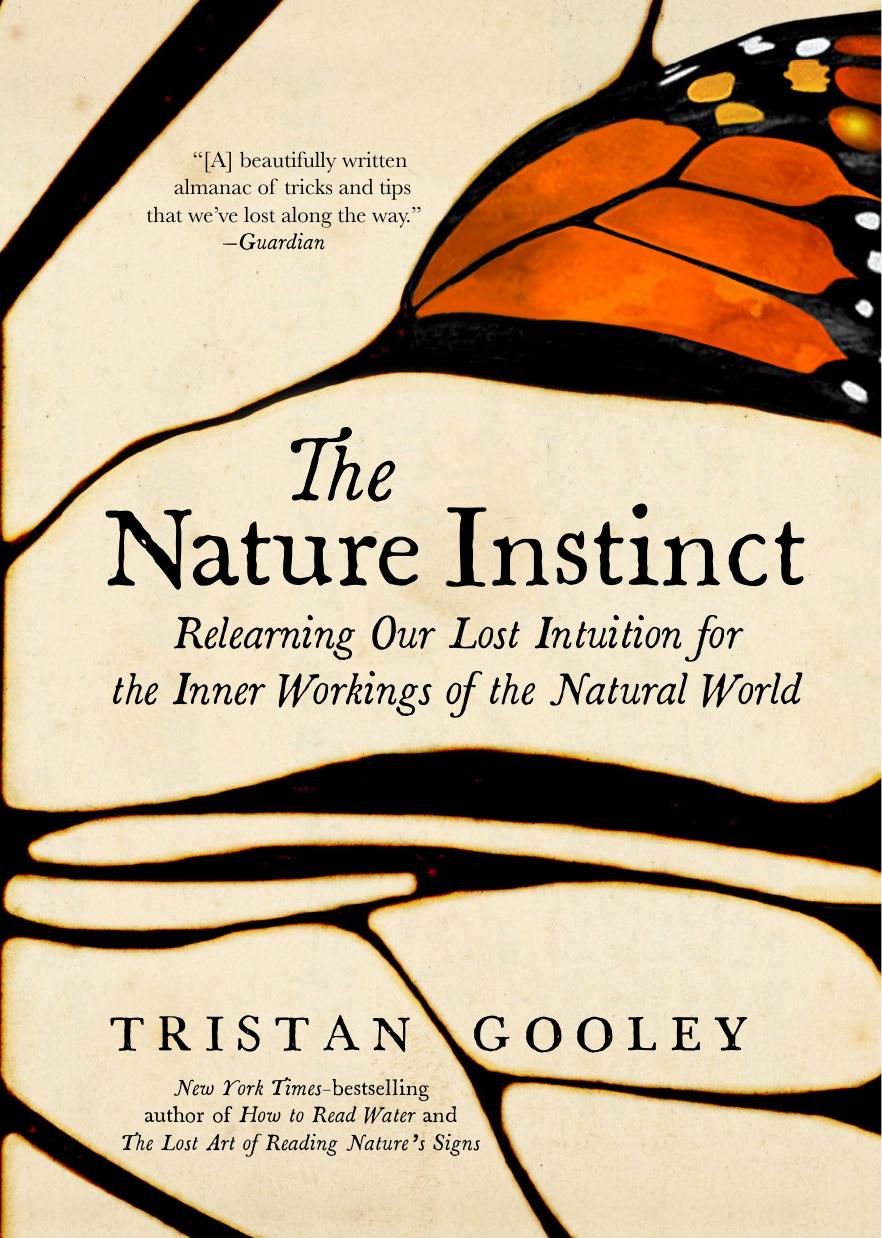The Nature Instinct by Tristan Gooley

Author:Tristan Gooley
Language: eng
Format: epub, pdf
Publisher: The Experiment
Published: 2018-10-19T01:59:38+00:00
Part IV:
Signs of Wisdom: Advanced Keys
Flock, Bubble, and Burst
LOOKING OUT ACROSS THREE LARGE FIELDS to the hill on the far side, I sensed that the distant sheep were sleeping.
Our neighboring farmer’s sheep graze on the hillside fields I can see from home. I don’t know them individually in the way many shepherds do, but I’ve come to know the flock. It has been illuminating to remember how these animals grew from being an anonymous lump to a flock with character and meaning. There are now some simple behaviors that I enjoy sensing instantly.
I normally see the sheep in the distance, and often they’re too far away for me to tell which way they’re facing. Yet their group behavior reveals their mood and plans; there is a message in the shapes they form.
In general, groups of prey animals will gather closer to each other in open areas where they feel exposed and are more likely to spread if they’re in familiar sheltered areas, like light woodland. Animals at the periphery of any group are at greater risk, and if they’re anxious, we can watch them trying to avoid being on the edge. Frogs will hop into gaps to get away from it, and experienced birds prefer not to nest at the extremes of any colony, as those nests suffer the greatest predation.
If sheep appear widely scattered with no clear pattern, they are settled and grazing. But if they are in a tight central, rounded clump, some-thing is troubling them.
My favorite pattern is actually the looser, rounded shape of a flock asleep. It will be set in from any edges, and there is an even spread to the animals, neither bunched up tight nor spread wide. Sheep need a lot less sleep than we do, so I tend to see this pattern only if I catch them early on a midsummer morning.
If there is a denser collection of several sheep at one edge of the flock, it acts like an arrowhead, revealing the direction of travel well before any motion is detectable. At the opposite side of the flock, at the trailing edge, the sheep are more spread out and fewer, often with one or two lagging considerably. A flock on the move may walk in long, straight lines, visible from a long way off, each individual obediently traipsing after the one in front. There are familiar trails on the hillside, a visible trace in the grass, a darker straight line that runs before and after the procession.
Sheep are not credited with great intelligence or initiative, but shepherds know that some animals lead, others follow, and many more tend toward the center of a flock. In wilder regions, the leaders were traditionally spared slaughter, as they were helpful to the shepherd for their proven ability to guide the others.
Fascinatingly, competition and vanity appear to be involved. Sheep that see themselves as leaders do not like to find themselves led and jostle for position, surging toward the head of the flock as they fall behind.
Download
This site does not store any files on its server. We only index and link to content provided by other sites. Please contact the content providers to delete copyright contents if any and email us, we'll remove relevant links or contents immediately.
Tools of Titans by Timothy Ferriss(7816)
Turbulence by E. J. Noyes(7702)
Astrophysics for People in a Hurry by Neil DeGrasse Tyson(5002)
Secrets of Antigravity Propulsion: Tesla, UFOs, and Classified Aerospace Technology by Ph.D. Paul A. Laviolette(4996)
Design of Trajectory Optimization Approach for Space Maneuver Vehicle Skip Entry Problems by Runqi Chai & Al Savvaris & Antonios Tsourdos & Senchun Chai(4843)
Room 212 by Kate Stewart(4739)
Pale Blue Dot by Carl Sagan(4619)
The David Icke Guide to the Global Conspiracy (and how to end it) by David Icke(4382)
A Journey Through Divination and Astronomy by Publishing Pottermore(4250)
Apollo 8 by Jeffrey Kluger(3513)
Goodbye Paradise(3446)
Losing the Nobel Prize by Brian Keating(3425)
COSMOS by Carl Sagan(3350)
The Five People You Meet in Heaven by Mitch Albom(3335)
How to Read Water: Clues and Patterns from Puddles to the Sea (Natural Navigation) by Tristan Gooley(3240)
Brief Answers to the Big Questions by Stephen Hawking(3239)
How to Read Nature by Tristan Gooley(3080)
The Order of Time by Carlo Rovelli(3073)
A Brief History of Time by Stephen Hawking(2819)
